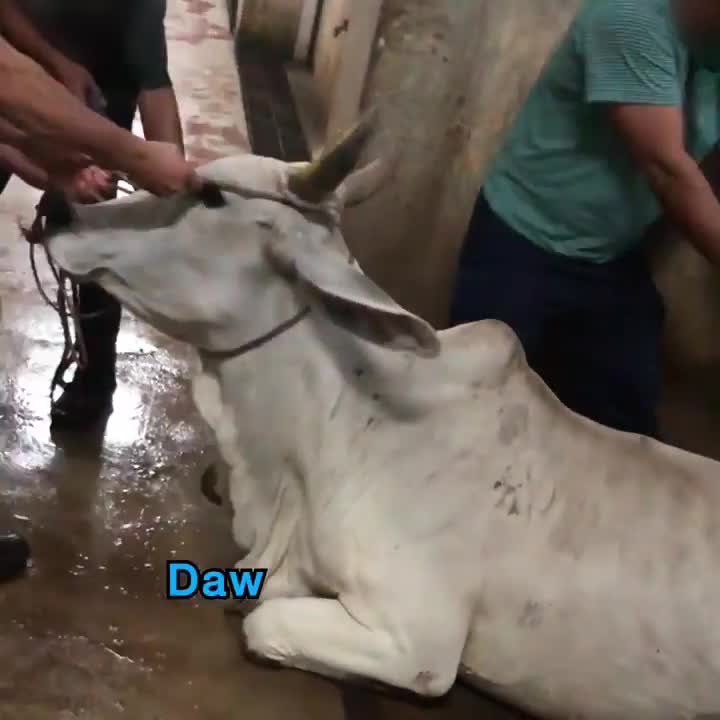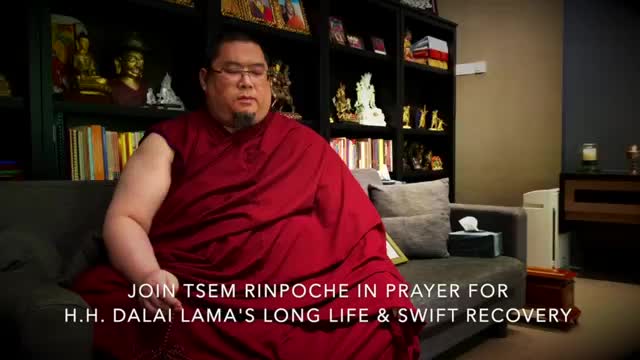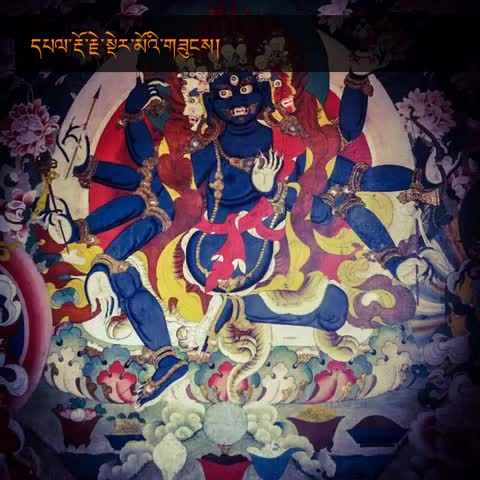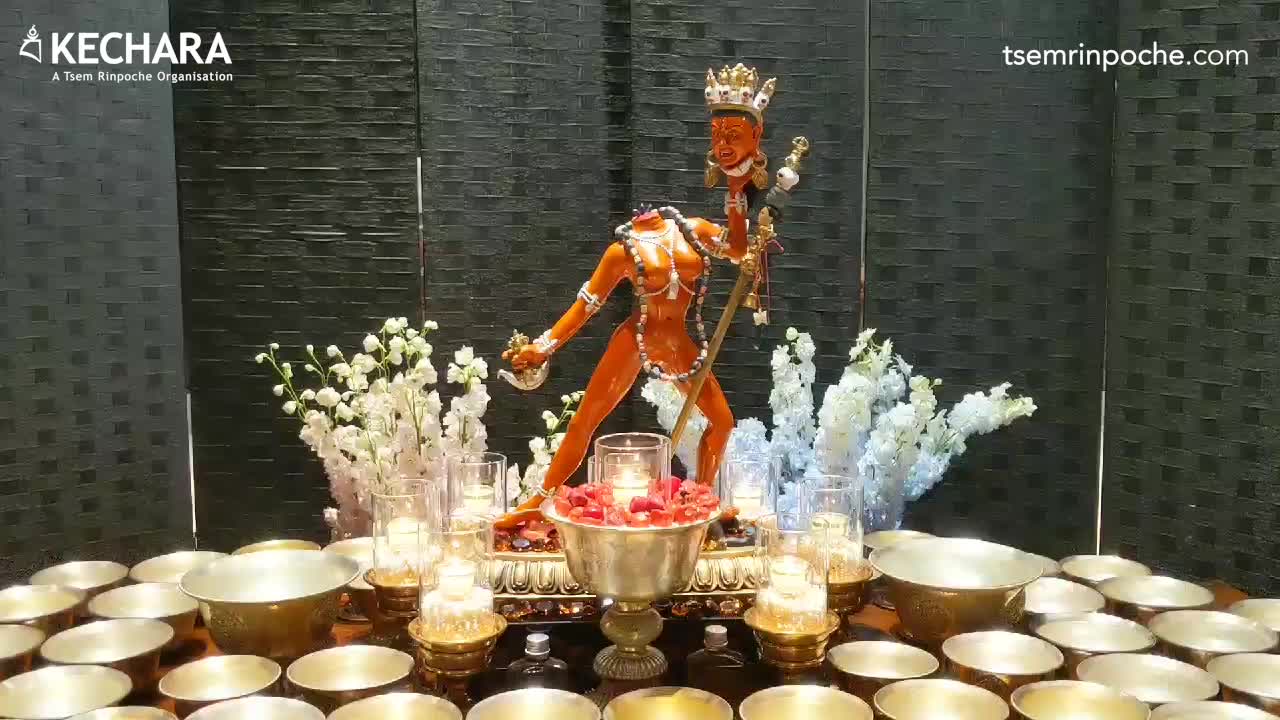Brief Commentary on 50 Verses of Guru Devotion
(By Tsem Rinpoche)
To download the commentary below in Word format, please click HERE.
(Disclaimer: I do not own any of the information. I am sharing this commentary here out of my great admiration for the illustrious scholar and master Geshe Ngawang Dhargyey and wish to bring more awareness of his writings and commentaries. I am not profiting from its use.)
THE FIFTY VERSES OF GURU DEVOTION
By Geshe Ngawang Dhargyey (Last Updated Sep 10, 2008)
From the Introduction of Geshe Ngawang Dhargyey’s short commentary on the Fifty Verses:
The Fifty Verses of Guru Devotion [Skt: Gurupancashika; Tib: Lama Nga-chu-pa] was written in about the first century B.C. by Ashvagosha. This Indian poet was known by many names—such as Aryashura, Matriceta, Patriceta, Matichitra, and Bhavideva—and was a contemporary of King Kaniska of the Kusan Dynasty. Having previously been a strong non-Buddhist believer, he became an extremely devout follower of the Buddha’s path and wrote many works on its various aspects.
Shakyamuni Buddha lived about four centuries before Ashvagosha. He taught sutras dealing with meditative practices for attaining liberation and enlightenment and, in the form of Buddha Vajradhara, tantras covering speedier but more dangerous methods for achieving this latter goal.
Success in following either the sutra or the tantra path to enlightenment depends solely upon your guru devotion, as Lord Buddha indicated in the Lotus Sutra (Saddharmapundarikasutra) and in the Kyedor Shägyü Dorje’i G’ur, an explanatory work to the Hevajra tantra, where he stated that in future times of degeneration he would take the form of gurus and therefore, at such times, gurus should be as respected as buddhas because they are their living representatives.
Guru devotion involves both thought and action. The most important thing is to develop the total conviction that your guru is a buddha—this is a prerequisite for receiving any insight. Whether you are aiming to attain liberation in order to benefit mainly yourself or reach the perfected state of a fully enlightened buddha in order to enlighten all others, your guru can show you the way only if he himself has already gained these achievements. If you doubt your guru’s competence and ability to guide you, your practices will be extremely unstable and you will be unable to make any concrete progress. You must have full confidence that it is possible to become enlightened, that your guru is living proof of this, and that by following the Buddha’s teachings as your guru instructs, you can achieve the same. Only then will it be possible for you to gain any real benefit from your practices.
Seeing only good qualities in your guru, therefore, is the way to develop these qualities yourself. Normally most people are blind to their own shortcomings, while the faults of others shine out clearly. But if you did not possess these same faults yourself, you would be unable to recognize them in others. If there are two pieces of fruit, one ripe and one rotten, and the person next to you takes the ripe one, it is only because of your own greed that you accuse him of being greedy and selfish. If you were unattached to the fruit, it would not matter to you which one he took—you would simply see him as having taken a piece of fruit.
Likewise, if you can train yourself to see only good qualities and never any faults in your guru, this positive outlook will come to pervade, amplify and reflect your own state of mind. As we all have buddha nature within us—the clear, uncontaminated state of pure mind established without any true independent existence—seeing our guru as a buddha gives us the possibility of activating and realizing our own buddha nature. Seeing only our guru’s faults merely reinforces our own shortcomings and negative attitudes; seeing only his perfection enables us to attain the perfection of buddhahood ourselves. Therefore, one of the main practices of guru yoga, particularly in tantra, is to realize the inseparability of our own mind with our guru, the buddhas and our meditation deity, which is a pure manifestation of the enlightened mind. Thus, guru devotion is the root of all attainments.
If your guru acts in a seemingly unenlightened manner and you feel it would be hypocritical to think him a buddha, you should remember that your own opinions are unreliable and the apparent faults you see may be simply a reflection of your own deluded state of mind. Also, you should think that if your guru acted in a completely perfect manner, he would be inaccessible and you would be unable to relate to him. It is therefore out of your guru’s great compassion that he may show apparent flaws. This is part of his skillful means in order for him to be able to teach you; he is mirroring your own faults. Therefore, check within and learn from him how to remove your shortcomings. If you are only intent on criticizing your guru, he will never be able to benefit you.
It was Buddha Vajradhara himself who said that your guru is to be seen as a buddha. Therefore, if you have faith and take refuge in the Buddhist teachings, you will try to understand what Vajradhara meant by this.
Buddhas exert a great positive influence on the world in the same way that the sun does. But just as a magnifying glass is needed to focus the rays of the sun in order for tinder to catch fire, so too is a guru required to focus the buddhas’ virtuous conduct into your mind-stream to inspire you to follow the path. Thus, as living examples representing the buddhas, gurus carry on the work of all the enlightened beings, acting as an accessible focal point for your practices so that you can gain buddhahood yourself.
Through devotion to your guru, showing him respect and making offerings, you accumulate the merit necessary to attain liberation from all suffering. Such service is done not to benefit your guru but for your own sake. When you plant seeds in a field, it is not to benefit the earth—you’re the one who harvests the crops. Therefore, with the proper devotional attitude towards your guru—seeing him as a buddha—the more positive energy you exert in his direction, the closer you come to buddhahood yourself. Likewise, if you hate your guru and generate negative energy towards him, you are deliberately distancing yourself from his enlightened state and freedom from pain. As a result you bring intense suffering upon yourself. Therefore, if you see faults in your guru and tend to belittle him, remember that your opinions are unreliable and that only unhappiness can result from despising the states of happiness he represents.
Remembering your guru’s kindness to teach you during this degenerate age after Shakyamuni Buddha has passed away, you must develop loving respect for him. He teaches you despite your delusions and does not force you to undergo the hardships that many disciples had to endure in the past. He gives you initiations and oral teachings and transmits the unbroken lineages that come from the Buddha himself. He inspires you to attain his state and helps you materially when you need it. Without loving respect for your guru you will never become enlightened; if you don’t respect the state of buddhahood he represents, how can you hope to attain it?
The various aspects of devoting yourself to your guru by means of thought have been taught extensively in such texts as the Gandavyuha Sutra and their scriptural references are detailed in Je Tsongkhapa’s Lam-rim Chen-mo.
Ashvagosha’s Fifty Verses is the most comprehensive summary of devoting yourself to your guru by means of action. Its scriptural sources are a wide range of tantric texts, including the Guhyasamaja, Kalachakra, Chakrasamvara, Vajradakini, and Vajrahridayalamkara tantras. The specific tantric sources for each verse are given in Lama Tsongkhapa’s Fulfillment of All Hopes, his commentary on this text.
As important as guru devotion is for practitioners of sutra, it is even more essential and more emphasized in the study and practice of tantra . This is because tantric techniques are extremely difficult and complicated. If practiced correctly, they can bring you buddhahood within your lifetime, but if not, they can be very dangerous and bring you extremely dire consequences. Therefore, the direct personal guidance of a guru is indispensable.
Since the Fifty Verses outlines specifically how disciples should act with their guru, it is customarily taught before a tantric initiation is given. Once a guru-disciple relationship has been established, disciples are taught guru devotion and the common path of renunciation, bodhicitta, and correct view of emptiness. Then, after receiving the proper initiations, they can be led gradually through the stages of tantra on the firm foundation of guru devotion and the three principal aspects of the path.
The Fifty Verses of Guru Devotion commentary
Homage to the Bhagavan Vajrasattva
Bhagavan is one of the many epithets used for an enlightened being, a buddha. The Tibetan term for it, chom-dän-dä, is etymologized as follows: chom means to overcome—buddhas have overcome both the obstacles preventing liberation and those preventing omniscience. The former include the delusions, or moral and mental defilements [Skt: klesha], as well as their imprints [karma] and the ignorance of grasping for true independent existence; the latter refer to the imprints of this ignorance. Dän means to possess—buddhas possess all good qualities, having completed the accumulation of both merit and insight, resulting in their form and wisdom bodies respectively. Dä means to pass beyond—buddhas have passed beyond both samsara and nirvana.
The hidden meaning of Vajrasattva [Tib: Dorje Sempa] can also be discovered from its etymology. Dorje means indestructible diamond lightning—here it refers to the diamond-hard wisdom of non-dual bliss and emptiness, that is (1) the non-duality of the mind that has the bare perception of emptiness experienced with a feeling of great bliss and (2) the emptiness that is the object of this mind. Sempa means one with a heroic mind—one who has abandoned all delusions, ignorance and their imprints and possesses the heroic mind ready to help others in all possible ways at any time.
Thus Bhagavan Vajrasattva refers to the state of Vajradhara, the form the Buddha took when teaching tantra. As guru devotion is the way to attain this enlightened state, Ashvagosha begins his work with this homage.
Verses 1 & 2
In general, there are three types of initiation: causal, pathway and resultant. The first is to ripen your mindstream, the second is an actual path of practice through which to gain enlightenment, and the third is into the actual liberated state of buddhahood. Everyone who ever has or will attain enlightenment does so through receiving these highest empowerments from their tantric masters.
Verse 3
As a disciple, you must regard your guru as an enlightened being. Even if from his own point of view he is not enlightened and you, his disciple, have gained buddhahood before him, you must still show him respect and pay homage. For instance, Maitreya, the fifth and next buddha of the thousand of this world age, who now presides over Tushita buddha-field, became enlightened before his guru, Shakyamuni Buddha. To demonstrate respect for his guru, Maitreya has a stupa, or reliquary monument, on his forehead. Likewise, Avalokiteshvara, the manifestation of the compassion of all the buddhas, is crowned in his eleven-headed aspect with the head of his guru, Amitabha Buddha, the one who presides over Sukhavati buddha-field.
Thus, learning from a guru should not be like killing a deer to extract its musk and then discarding its corpse. Even after attaining enlightenment you must still continue to honor your guru who made all your achievements possible.
Verses 4 & 5
One of the ordination rules is that monks and nuns should not prostrate to laypeople. This is taken to mean that in public you should not show this type of respect for your lay guru as it might cause misunderstanding and scorn among those who casually observe. It is better to prostrate facing scriptural texts or Buddha images near him, while directing your reverence in your mind to your guru.
For example, the great Masters Chandragomin and Chandrakirti often debated with one another. The former was a layman, the latter a monk. One day Chandrakirti invited Chandragomin to his monastery. He wanted all the monks to form a procession, but the lay master objected that the local townspeople would find it strange. Chandrakirti told him not to worry. He placed a statue of Manjushri on a high throne and in the procession had a monk carry it directly before Chandragomin. All the people thought that the ceremony was in honor of Manjushri, the manifestation of all buddhas’ wisdom, and thus Chandrakirti avoided creating any bad feelings.
Although restraint and indirect means of showing respect are often called for out of consideration for others, in private a disciple must follow all the proper procedures of guru devotion, no matter what the status of his guru may be. However, general respect, such as rising whenever he comes into view, must be shown at all times.
On his own part, however, a guru should always be humble never arrogant or pompous, thinking himself great and worthy of honor. Pari Rinpoche, one of the most realized disciples of the senior and junior tutors of His Holiness the Fourteenth Dalai Lama, always kept a scriptural text by his seat. Explaining why, he said that when people would come to visit him and prostrated, at least they would gain some merit from showing respect to the scripture, since he himself had no qualifications.
Verse 6
At initiations, we take many sets of vows never to abandon the practices and procedures essential for spiritual progress. The disciples pledge their word of honor never to transgress these vows, such as always to visualize their guru as inseparable from the deity into whose practice they have just been initiated. Such deities, as well as the gurus, share the same enlightened nature as all the buddhas; they differ only in the physical aspect they manifest.
The guru, too, has previously pledged his word of honor never to disclose the tantric secrets to those who are unable to understand and keep them. Just as the milk of a lion should not be kept in a clay pot, so the profound and powerful methods of tantra should not be entrusted to those who are not ready. If, having taken such vows, either guru or disciple should allow their words of honor to degenerate, it will be impossible for either to attain any of their goals, and very serious unfortunate consequences will follow for both. Therefore, it is extremely important for there to be a mutual examination between the guru and disciple before they enter a formal relationship.
In ancient times, in order to receive an initiation, potential disciples would have to ask over a period of three years. Initiations were never given casually. By making disciples wait so long, gurus would impress upon them the seriousness of entering the tantric path, test their commitment and ensure that they were properly prepared. Often a guru would make disciples wait even longer before agreeing to teach them anything. He would repeatedly test their character and only when he had understood them well would he accept them as disciples.
Disciples must also test potential gurus to determine if they are fully qualified. You have to be confident that you will be able to devote yourself fully to this master. Before entering a formal guru-disciple relationship, you have complete freedom of choice, but once you have established this bond, you have to follow the teachings on guru devotion with total commitment.
Verses 7, 8 & 9
In general, a Mahayana guru should have the following ten qualities:
- Discipline as a result of his mastery of the training in the higher discipline of moral self-control;
- Mental quiescence from his training in higher concentration;
- Pacification of all delusions and obstacles from his training in higher wisdom;
- More knowledge than his disciple in the subject to be taught;
- Enthusiastic perseverance and joy in teaching;
- A treasury of scriptural knowledge;
- Insight into and understanding of emptiness;
- Skill in presenting the teachings;
- Great compassion; and
- No reluctance to teach and work for his disciples regardless of their level of intelligence.
A tantric master must have even more good qualities, as listed in the text. Most important is that he be an extremely stable person, with his body, speech and mind totally under control. He should be someone in whose presence everyone feels calm, peaceful and relaxed and even the mere sight of him brings great pleasure to the mind. And his compassion must be unsurpassable.
There are two sets of ten fields in which the vajra guru must be a complete master. The ten inner ones are essential for teaching the yoga and maha-anuttara yoga classes of tantra, which stress the importance of purifying mainly internal mental activities. These are expertise in:
- Visualizing wheels of protection and eliminating obstacles;
- Preparing and consecrating protection knots and amulets to be worn around the neck;
- Conferring the vase and secret initiations, planting the seeds for attaining a buddha’s form bodies;
- Conferring the wisdom and word initiations, planting the seeds for attaining a buddha’s wisdom bodies;
- Separating the enemies of Dharma from their own protectors;
- Making the offerings, such as of sculptured tormas;
- Reciting mantras, both verbally and mentally, that is, visualizing them revolving around his heart;
- Performing wrathful ritual procedures for forcefully catching the attention of the meditational deities and protectors;
- Consecrating images and statues; and
- Making mandala offerings, performing the meditational practices (sadhana) and taking self-initiations.
The ten external qualities are required for teaching the kriya and charya classes of tantra, which stress the importance of purifying mainly external activities in connection with internal mental processes. These are expertise in:
- Drawing, constructing and visualizing the mandala abodes of the meditational deities;
- Maintaining the different states of single-minded concentration;
- Executing the hand gestures [Skt: mudra];
- Performing the ritual dances;
- Sitting in the full meditation position;
- Reciting what is appropriate to these two classes of tantra;
- Making fire offerings;
- Making the various other offerings;
- Performing the rituals of
- Pacification of disputes, famine and disease,
- Increase of life span, knowledge and wealth,
- Power to influence others and
- Wrathful elimination of demonic forces and interferences; and
- Invoking meditational deities and dissolving them back into their appropriate places.
It is not sufficient for a tantric master merely to know how to perform the superficial actions of these above rituals; he must actually be able to do them. For instance, when consecrating an image of a meditation deity, he must be able to invoke the actual deity and place it in the image, not merely recite the words of the accompanying text. If you take as your guru a master with all these qualifications and powers and he accepts you as his disciple, you must devote yourself fully to him. Although it is possible that out of delusion you might disagree with your guru, never show him disrespect or despise him from the depth of your heart.
Verses 10 through 15
As your guru is a buddha, despising him is the same as hating all enlightened beings. The state of buddhahood is one of complete liberation from all suffering, ignorance, delusions and obstacles. It is the attainment of all good qualities, complete perfection and total omniscience. By despising or belittling such a state through disparaging your guru, you cast yourself in the opposite direction from happiness and freedom; having contempt for wisdom and liberation, you gain instead bondage and pain. Such tormented states are what have been described in all the scriptures as the various hells.
Thus there are great dangers in entering a guru-disciple relationship. A tantric master is a teacher who has given you initiations, tantric discourses or even instructions on mandala drawing. As he has no pretension and is never boastful, he will always hide his good qualities and never hesitate to admit shortcomings. If you do not recognize such traits as indications of his perfection, humility and skillful means, you may make the serious mistake of belittling or seeing faults in him.
Having established a formal bond with this guru and through him entered a pathway to buddhahood, if, from the depths of your heart, you break this link , you cast yourself into terrible suffering. Therefore, you must have great awareness, for although guru devotion will elevate you to full enlightenment, a breach of it will be your downfall.
Verse 16
As a buddha, a guru will never hold a grudge. Showing him disrespect cannot possibly offend or hurt him—the only one you’ll harm will be yourself. Therefore, if you repent and beg his forgiveness, he will accept what you offer with great compassion. Then, by the force of your faith, respect and devotion, you need not experience great misfortune.
The beneficial effects of guru devotion and the dire consequences of a breach of it are not rewards and punishments from a God-like guru. They follow directly from cause and effect. Your guru is the focal point for your practices leading to enlightenment—the more devoted you are towards the state of perfection he represents, the closer you come towards this goal. Despising him can only take you further away into darkness and ignorance.
Verses 17 through 21
Making offerings to your guru as the representative of all the buddhas is extremely important. Such generosity is symbolic of your total dedication to achieving buddhahood. If through miserliness or selfishness you hold back from giving what you find the most pleasing and offer only what you do not want for yourself, how can your promise to give yourself totally to the work of benefiting all sentient beings be anything but a farce? Without any attachment you must be willing to sacrifice everything for your attainment of enlightenment through your guru. Offering a mandala symbolizes the dedication of your body, speech and mind—even the entire universe—to this goal.
If you are poor, like Jetsun Milarepa was, it doesn’t matter that you don’t have any riches to offer. What is important is your state of mind and willingness to sacrifice everything for the sake of your guru, enlightenment and all sentient beings. The best offering, then, is of your practice. But if you do have wealth, you must never hesitate to use it for gaining merit.
Therefore, making offerings is not so that your guru can become rich. On his part, the guru should regard such offerings as a tiger does grass. The point is to benefit yourself and ultimately everybody else by your total dedication. Through practicing like this you accumulate great merit that eventually will result in your attaining the form body of a buddha, and if you can see the empty nature—the lack of true, independent existence—of yourself, your guru and what you offer, you simultaneously accumulate the insight that eventually will result in your attaining the wisdom body of a buddha. Thus the supreme powerful attainment of buddhahood comes from making offerings to your guru.
Verse 22
Your guru, the deities and Vajradhara, the form that Lord Buddha assumes in the tantras, are all the same in nature. They are like a single person in a drama changing masks and costumes and playing different roles. The same is true if you have many gurus. You must regard them all as buddha, differing only in the face he wears.
Your ability to see your guru and Buddha Vajradhara as the same depends on your motivation. If you have developed the enlightened motive of bodhicitta, you are striving to become a buddha yourself in order to be fully able to benefit others. The stronger your bodhicitta motivation, the more the thought of enlightenment will pervade your mind. Thinking only of enlightenment and how to achieve it, you will automatically be able to see your guru as Vajradhara because nothing else will be in your mind.
The stronger your wish to attain enlightenment, the more clearly will you see the necessity for your guru to be a buddha. Thus, with the strong compassion of wishing others never to suffer, you can dedicate yourself easily and with joy. Through the practice of the perfections of generosity, morality, patience and so forth, all centered on your guru, you will then be a ble to attain his state.
Verse 23
A stupa is a monument in which relics of a buddha are kept. Like your guru, it serves as a focal point for your veneration and devotion to attaining buddhahood. Both destroying a stupa and stepping on your guru’s shadow, then, are acts of extreme disregard and disrespect for the state of enlightenment and the fearsome consequences of both are therefore the same. Similarly, if you treat your guru’s shoes, seat, horse or vehicle as ordinary objects and presume to use them yourself or step on them, your arrogant attitude can only become a major hindrance to your attainment of buddhahood.
Verses 24 & 25
Obeying your guru’s orders and following his advice are more important than making countless offerings. Entrusting yourself fully to him, he will guide you along the path to enlightenment. If with haughty pride and stubborn closed-mindedness you think you know what is best for your own spiritual progress, how will you be able to learn anything from him?
This does not mean that you should become a mindless slave or that your guru can take undue advantage of you. Since you are aiming for the complete freedom of enlightenment, there must also be freedom in the means of attaining it. You should never follow your guru’s wishes simply because you feel obligated or forced to obey. Rather, try to understand his intentions and aim. Your guru will only tell you to do what is beneficial for yourself and others. What he asks may be difficult and its immediate purpose may not be obvious, but you should receive his advice joyfully and with deep gratitude for his concern for your welfare.
Examine yourself honestly to see if you can follow wishes. If there is no way in which you can comply, do not be rude or arrogant. Explain politely and with extreme humility what the difficulty is. Your guru will not be unreasonable; as a buddha , he is filled with great compassion.
If, however, you can avoid transgressing his advice, this is best. Following the spiritual path as he directs, you can attain not only the ordinary powerful attainments of extra-physical and mental powers common to non-Buddhists, but also, depending on your motivation, higher rebirth, liberation or the supreme powerful attainment of enlightenment.
Verse 26
Before Dromtönpa studied with Atisha , he served another guru in Kham. By day he carried his master’s children on his back, spun wool with his hands and softened leather with his feet; by night he tended his master’s animals. He did all this with great joy, and although he was only a layman, Atisha designated him as the recipient of all the teachings he brought to Tibet.
When Jetsun Milarepa was serving Marpa, he would throw himself in the mud and beg his guru’s wife to sit on him while she milked the cows. That’s the kind of respect and devotion you need to have for everybody close to your guru. Remember that he is a buddha with equal regard and love for all. If you are jealous of his family, attendants or other disciples, if you are possessive of his time and attention, this clearly shows that you do not sincerely believe him to be a buddha.
Verses 27 through 30
All these examples of improper behavior are prohibited not because your guru will be offended: buddhas cannot be affected by rudeness. It is because you want to attain his state of perfection and have great respect for this achievement that you should not act in a coarse, arrogant or inconsiderate manner.
The customs outlined here are not meant to be cruel, unnatural restrictions. If you are sitting cross-legged at a discourse and get too uncomfortable, you are certainly permitted to lift your knees or shift position, but sitting casually with your feet stretched out towards your guru reflects a flippant, disrespectful attitude. Attending a discourse is not like being at a sporting event; you’re not there for your amusement but in order to attain enlightenment for the sake of all sentient beings. Therefore, you must show your guru great respect and always be alert to his needs and comfort.
Verses 31 & 32
You must always be considerate of your guru. As he is the one who will show you the way to complete freedom from suffering and how to liberate others, he is more precious than anything else. If he is in danger, you must protect him. Do not sit back idly and proudly as if you owned the entire world.
Verse 33
If you have the opportunity to bathe your guru, shave his head or in any way attend to his comfort, you will be able to gain a great deal of merit. Thus all such actions must be done with the greatest respect. Never selfishly think of your own needs first. Your primary concern should be for your guru and your attainment of his enlightened state. Only afterward should you care for yourself.
Verse 34
Once when Lama Tsong Khapa was giving a discourse to some disciples in a retreat house above where Sera Monastery would later be built, Khädrub-Je came to meet him for the first time. He asked a nun living near by where the Venerable Tsong Khapa could be found and she ran off without saying a word. She rinsed her mouth, lit a stick of incense and then replied, “My gracious, venerable Abbot, His Presence Je Tsong Khapa resides over there.”
If your guru’s name is Rinchen Dorje, you may refer to him when speaking to others as “my spiritual master, His Presence, the holy, venerable Rinchen Dorje.” At least some respectful titles must be used. It is extremely crude, arrogant and grating to address, refer to or write about your guru using only his personal name—he is not your childhood playmate but a buddha leading you to enlightenment.
Verses 35 & 36
Never waste your guru’s time with idle chatter. When you go to see him, make three prostrations and announce the purpose of your visit directly. Ask your questions in a straightforward manner, with extreme politeness and humility. If your guru gives you advice or asks you to do something, examine yourself to see if you can comply. If you cannot, then excuse yourself and explain why not. Do not promise to do something and then go back on your word—the consequences of such disobedience and negligence are very serious. But if you can comply, tell him you will do what he says, keep him informed of your progress, and always report in the end what you have done.
Verses 37 through 39
It is improper for a guru to offer to teach without being specifically requested. He teaches to benefit his disciples, not to display his knowledge. Therefore it is important to make such requests in the proper, formal manner. However, do not try to pressure your guru into teaching you something too advanced for your level. He will judge when you are ready. Do not haughtily order him to do what you think is best.
When attending his discourses, remember that they are not social events. The reason you’re there is to learn how to attain enlightenment for the benefit of others, not there to show off your wealth and beauty to others, so don’t adorn yourself like a peacock. Also, be aware and considerate of the social customs of those around you; never dress in a way that would offend them or disturb their minds. Be neat, clean and unostentatious and sit with great respect for your guru.
When serving your guru, do not be childish. The reason you offer service and gifts is to create the merit you need to attain enlightenment for the sake of all sentient beings, not to be able to boast to others how pious and devoted you are. No merit can be gained from arrogance. Do not serve your guru with haughty pride, as though you were doing him a great favor. He doesn’t need any help from you—he’s a buddha—but you need a lot from him: by allowing you to perform small tasks he is giving you the great opportunity to accumulate merit, therefore, remember his kindness in allowing you to serve him.
Also, do not act in a coquettish manner, flirting with your guru as though you could win his favor in this way. Your guru is a buddha with equal loving compassion for all. He will not be impressed by your frivolous behavior.
Verses 40 through 42
Even when you have become a guru yourself, you must still practice great devotion to your guru. If you are requested by your own disciples to give an initiation, teachings and so forth and your own guru resides in the same area, you should first ask him if he can do it instead of you. If he cannot, then only with his approval can you go ahead to fulfill these requests.
If your guru lives far away, you should write to him for permission to accept a disciple or give any teachings. You should not act independently with pride as if you were a great and holy master, but always in deference to his advice.
Especially in the presence of your guru, you must not allow your own disciples to show you respect and at all times be humble. You should give any offerings you receive to your guru as a sign of your respect. He will then take a token amount and give you back the rest. He has no greed for your offerings but you must always keep him foremost in your mind.
Rechungpa was once living in the same town as his guru, Jetsun Milarepa. As he was very handsome, many devotees came to see him and gave him a lot of offerings. He thought, “If I have been given this many offerings, my guru must have received at least three times as much.”
He went to Jetsun Milarepa and said, “Didn’t we receive a lot of offerings today? Let’s share them with all the other disciples.” But his guru showed him that all he had been given that day was piece of meat, a cheese cake and some butter. Rechungpa felt so embarrassed that he had received more offerings than his guru that he told him he would leave town immediately. He asked permission to go to Lhasa to see the famous Buddha image, but Jetsun Milarepa replied, “If you see your guru as buddha, what use is it to go look at some statue?”
Then Rechungpa asked if he could go visit the ancient monastery at Samyé. Again his guru answered, “When observing the spectacle of your mind, what use is it to go look at a building?”
A third time he requested to make a pilgrimage to Lhodrak, where his guru’s master, the great translator Marpa had lived. Milarepa simply said, “If you meditate on my master’s teachings, what use is it to go look at his house?”
Jetsun Milarepa told him to stop trying to do so many things but to go into retreat to gain more confidence in his practice instead. So this is what Rechungpa did, because he realized that it is not proper for a disciple to receive more respect and offerings than his or her guru.
Verses 43 & 44
All disciples who receive tantric empowerments from the same guru become vajra brothers and sisters and should therefore have great affection and regard for each other and help each other stay on the path. You should never be jealous of or feel pride toward your fellow disciples or compete with them. By correcting each other you please your guru and everybody benefits. If there is unity and harmony among Dharma friends, it will spread into the lives of those around them.
Verse 45
Guru devotion is not a fanatical practice. If you are ill and your guru enters the room, you don’t have to stand up and prostrate. If you have something to offer but are too weak to extend your hand, it is permissible even for your guru to bend down to your bed to receive it. This is not disrespectful because in your heart you want to do what is proper but your physical condition prevents you from doing it.
However, there are certain things for which there are no exceptions. You must never disturb your guru’s mind or be boastful, arrogant or disrespectful no matter what the circumstances.
Verses 46 & 47
All you want is happiness and freedom from suffering. The source of these is your guru because he shows you the path to buddhahood and, by his living example as an enlightened being, inspires you to travel this path yourself. If you realize this, you will understand the importance of single-minded guru devotion and do only what pleases him. Since the source of these teachings is Buddha Vajradhara, you should put aside all doubt—follow them with complete conviction and you will attain enlightenment.
What pleases your guru most, then, is your practice leading to buddhahood. Therefore, your motivation for pleasing him should be bodhicitta—your wish to help others by leading them to enlightenment—not worldly desires such as seeking your guru’s praise or fatherly approval.
Moreover, if your guru scolds you, examine your feelings. If you have not intentionally belittled him or sought to annoy him and have not responded to his scolding with anger or accusations that he is unenlightened, then you have not committed a breach of guru devotion. In such situations it is totally inappropriate to become depressed, despondent or to feel self-pity and guilt that your guru does not love you any more. To do so indicates that strong ego-grasping is causing you to take his criticism too personally.
Marpa scolded and even beat Jetsun Milarepa many times. This was not because he personally disliked him but because out of compassion he saw the need for forceful skillful means. Thus, if your guru is wrathful with you, try to see that he is using this method to tame your mind and lead you to enlightenment. As a buddha, how could he possibly hate you?
Verses 48 & 49
If, as a disciple, you have pure thoughts of benefiting others, are humble and neither arrogant nor selfish, and have no rough manners, your guru will first teach you what it means to take refuge. He will demonstrate the stability, direction, and meaning your life can be given by going for protection from all your suffering and confusion to the Triple Gem—the Buddhas, their teachings of Dharma and the Sangha community of those who realize them. He will then guide you gradually through the three principal paths of renunciation, bodhicitta and correct understanding of emptiness. On the firm foundation of your refuge and bodhicitta vows, you can then be given the detailed teachings on guru devotion.
This text was written to be recited daily so that disciples wouldn’t forget the important points of how to conduct themselves with their guru. When your master has prepared you in this way for tantra and you have become a suitable vessel, it is proper for him to initiate you. He will then explain the tantric vows and you must be sure never to transgress them. Buddha Vajradhara promised that if you keep the root tantric vows purely, even if you do no meditation, you will accumulate enough merit and eliminate sufficient obstacles to attain enlightenment within sixteen lifetimes.
After being initiated you will be empowered to follow the complete tantric path through the development and completion stages as directed by your guru, but your success in this will depend upon your guru devotion and how purely you keep your vows. Thus proper devotion to your guru in accordance with these teachings is essential throughout the path to the enlightened state of non-duality with your guru-buddha-deity.
The author concludes this text by dedicating the merit to all sentient beings and this is followed by the colophon.
Colophon
Gen Rinpoche Geshe Ngawang Dhargyey gave this oral commentary at the Library of Tibetan Works and Archives, Dharamsala, about 1973. The translation and explanation of the root text are based on commentaries by Lama Tsong Khapa and Pabongka Rinpoche. The root verses are not included here but provided with the 1976 commentary. Translated and edited by Sharpa Tulku, Khamlung Tulku, Alexander Berzin and Jonathan Landaw; published by the LTWA in 1975. This version lightly edited by Nicholas Ribush.
Thus Bhagavan Vajrasattva refers to the state of Vajradhara, the form the Buddha took when teaching tantra. As guru devotion is the way to attain this enlightened state, Ashvagosha begins his work with this homage.
Verses 1 & 2
In general, there are three types of initiation: causal, pathway and resultant. The first is to ripen your mindstream, the second is an actual path of practice through which to gain enlightenment, and the third is into the actual liberated state of buddhahood. Everyone who ever has or will attain enlightenment does so through receiving these highest empowerments from their tantric masters.
Verse 3
As a disciple, you must regard your guru as an enlightened being. Even if from his own point of view he is not enlightened and you, his disciple, have gained buddhahood before him, you must still show him respect and pay homage. For instance, Maitreya, the fifth and next buddha of the thousand of this world age, who now presides over Tushita buddha-field, became enlightened before his guru, Shakyamuni Buddha. To demonstrate respect for his guru, Maitreya has a stupa, or reliquary monument, on his forehead. Likewise, Avalokiteshvara, the manifestation of the compassion of all the buddhas, is crowned in his eleven-headed aspect with the head of his guru, Amitabha Buddha, the one who presides over Sukhavati buddha-field.
Thus, learning from a guru should not be like killing a deer to extract its musk and then discarding its corpse. Even after attaining enlightenment you must still continue to honor your guru who made all your achievements possible.
Verses 4 & 5
One of the ordination rules is that monks and nuns should not prostrate to laypeople. This is taken to mean that in public you should not show this type of respect for your lay guru as it might cause misunderstanding and scorn among those who casually observe. It is better to prostrate facing scriptural texts or Buddha images near him, while directing your reverence in your mind to your guru.
For example, the great Masters Chandragomin and Chandrakirti often debated with one another. The former was a layman, the latter a monk. One day Chandrakirti invited Chandragomin to his monastery. He wanted all the monks to form a procession, but the lay master objected that the local townspeople would find it strange. Chandrakirti told him not to worry. He placed a statue of Manjushri on a high throne and in the procession had a monk carry it directly before Chandragomin. All the people thought that the ceremony was in honor of Manjushri, the manifestation of all buddhas’ wisdom, and thus Chandrakirti avoided creating any bad feelings.
Although restraint and indirect means of showing respect are often called for out of consideration for others, in private a disciple must follow all the proper procedures of guru devotion, no matter what the status of his guru may be. However, general respect, such as rising whenever he comes into view, must be shown at all times.
On his own part, however, a guru should always be humble never arrogant or pompous, thinking himself great and worthy of honor. Pari Rinpoche, one of the most realized disciples of the senior and junior tutors of His Holiness the Fourteenth Dalai Lama, always kept a scriptural text by his seat. Explaining why, he said that when people would come to visit him and prostrated, at least they would gain some merit from showing respect to the scripture, since he himself had no qualifications.
Verse 6
At initiations, we take many sets of vows never to abandon the practices and procedures essential for spiritual progress. The disciples pledge their word of honor never to transgress these vows, such as always to visualize their guru as inseparable from the deity into whose practice they have just been initiated. Such deities, as well as the gurus, share the same enlightened nature as all the buddhas; they differ only in the physical aspect they manifest.
The guru, too, has previously pledged his word of honor never to disclose the tantric secrets to those who are unable to understand and keep them. Just as the milk of a lion should not be kept in a clay pot, so the profound and powerful methods of tantra should not be entrusted to those who are not ready. If, having taken such vows, either guru or disciple should allow their words of honor to degenerate, it will be impossible for either to attain any of their goals, and very serious unfortunate consequences will follow for both. Therefore, it is extremely important for there to be a mutual examination between the guru and disciple before they enter a formal relationship.
In ancient times, in order to receive an initiation, potential disciples would have to ask over a period of three years. Initiations were never given casually. By making disciples wait so long, gurus would impress upon them the seriousness of entering the tantric path, test their commitment and ensure that they were properly prepared. Often a guru would make disciples wait even longer before agreeing to teach them anything. He would repeatedly test their character and only when he had understood them well would he accept them as disciples.
Disciples must also test potential gurus to determine if they are fully qualified. You have to be confident that you will be able to devote yourself fully to this master. Before entering a formal guru-disciple relationship, you have complete freedom of choice, but once you have established this bond, you have to follow the teachings on guru devotion with total commitment.
Verses 7, 8 & 9
In general, a Mahayana guru should have the following ten qualities:
- Discipline as a result of his mastery of the training in the higher discipline of moral self-control;
- Mental quiescence from his training in higher concentration;
- Pacification of all delusions and obstacles from his training in higher wisdom;
- More knowledge than his disciple in the subject to be taught;
- Enthusiastic perseverance and joy in teaching;
- A treasury of scriptural knowledge;
- Insight into and understanding of emptiness;
- Skill in presenting the teachings;
- Great compassion; and
- No reluctance to teach and work for his disciples regardless of their level of intelligence.
A tantric master must have even more good qualities, as listed in the text. Most important is that he be an extremely stable person, with his body, speech and mind totally under control. He should be someone in whose presence everyone feels calm, peaceful and relaxed and even the mere sight of him brings great pleasure to the mind. And his compassion must be unsurpassable.
There are two sets of ten fields in which the vajra guru must be a complete master. The ten inner ones are essential for teaching the yoga and maha-anuttara yoga classes of tantra, which stress the importance of purifying mainly internal mental activities. These are expertise in:
- Visualizing wheels of protection and eliminating obstacles;
- Preparing and consecrating protection knots and amulets to be worn around the neck;
- Conferring the vase and secret initiations, planting the seeds for attaining a buddha’s form bodies;
- Conferring the wisdom and word initiations, planting the seeds for attaining a buddha’s wisdom bodies;
- Separating the enemies of Dharma from their own protectors;
- Making the offerings, such as of sculptured tormas;
- Reciting mantras, both verbally and mentally, that is, visualizing them revolving around his heart;
- Performing wrathful ritual procedures for forcefully catching the attention of the meditational deities and protectors;
- Consecrating images and statues; and
- Making mandala offerings, performing the meditational practices (sadhana) and taking self-initiations.
The ten external qualities are required for teaching the kriya and charya classes of tantra, which stress the importance of purifying mainly external activities in connection with internal mental processes. These are expertise in:
- Drawing, constructing and visualizing the mandala abodes of the meditational deities;
- Maintaining the different states of single-minded concentration;
- Executing the hand gestures [Skt: mudra];
- Performing the ritual dances;
- Sitting in the full meditation position;
- Reciting what is appropriate to these two classes of tantra;
- Making fire offerings;
- Making the various other offerings;
- Performing the rituals of
- Pacification of disputes, famine and disease,
- Increase of life span, knowledge and wealth,
- Power to influence others and
- Wrathful elimination of demonic forces and interferences; and
- Invoking meditational deities and dissolving them back into their appropriate places.
It is not sufficient for a tantric master merely to know how to perform the superficial actions of these above rituals; he must actually be able to do them. For instance, when consecrating an image of a meditation deity, he must be able to invoke the actual deity and place it in the image, not merely recite the words of the accompanying text. If you take as your guru a master with all these qualifications and powers and he accepts you as his disciple, you must devote yourself fully to him. Although it is possible that out of delusion you might disagree with your guru, never show him disrespect or despise him from the depth of your heart.
Verses 10 through 15
As your guru is a buddha, despising him is the same as hating all enlightened beings. The state of buddhahood is one of complete liberation from all suffering, ignorance, delusions and obstacles. It is the attainment of all good qualities, complete perfection and total omniscience. By despising or belittling such a state through disparaging your guru, you cast yourself in the opposite direction from happiness and freedom; having contempt for wisdom and liberation, you gain instead bondage and pain. Such tormented states are what have been described in all the scriptures as the various hells.
re are great dangers in entering a guru-disciple relationship. A tantric master is a teacher who has given you initiations, tantric discourses or even instructions on mandala drawing. As he has no pretension and is never boastful, he will always hide his good qualities and never hesitate to admit shortcomings. If you do not recognize such traits as indications of his perfection, humility and skillful means, you may make the serious mistake of belittling or seeing faults in him.
Having established a formal bond with this guru and through him entered a pathway to buddhahood, if, from the depths of your heart, you break this link , you cast yourself into terrible suffering. Therefore, you must have great awareness, for although guru devotion will elevate you to full enlightenment, a breach of it will be your downfall.
Verse 16
As a buddha, a guru will never hold a grudge. Showing him disrespect cannot possibly offend or hurt him—the only one you’ll harm will be yourself. Therefore, if you repent and beg his forgiveness, he will accept what you offer with great compassion. Then, by the force of your faith, respect and devotion, you need not experience great misfortune.
The beneficial effects of guru devotion and the dire consequences of a breach of it are not rewards and punishments from a God-like guru. They follow directly from cause and effect. Your guru is the focal point for your practices leading to enlightenment—the more devoted you are towards the state of perfection he represents, the closer you come towards this goal. Despising him can only take you further away into darkness and ignorance.
Verses 17 through 21
Making offerings to your guru as the representative of all the buddhas is extremely important. Such generosity is symbolic of your total dedication to achieving buddhahood. If through miserliness or selfishness you hold back from giving what you find the most pleasing and offer only what you do not want for yourself, how can your promise to give yourself totally to the work of benefiting all sentient beings be anything but a farce? Without any attachment you must be willing to sacrifice everything for your attainment of enlightenment through your guru. Offering a mandala symbolizes the dedication of your body, speech and mind—even the entire universe—to this goal.
If you are poor, like Jetsun Milarepa was, it doesn’t matter that you don’t have any riches to offer. What is important is your state of mind and willingness to sacrifice everything for the sake of your guru, enlightenment and all sentient beings. The best offering, then, is of your practice. But if you do have wealth, you must never hesitate to use it for gaining merit.
Therefore, making offerings is not so that your guru can become rich. On his part, the guru should regard such offerings as a tiger does grass. The point is to benefit yourself and ultimately everybody else by your total dedication. Through practicing like this you accumulate great merit that eventually will result in your attaining the form body of a buddha, and if you can see the empty nature—the lack of true, independent existence—of yourself, your guru and what you offer, you simultaneously accumulate the insight that eventually will result in your attaining the wisdom body of a buddha. Thus the supreme powerful attainment of buddhahood comes from making offerings to your guru.
Verse 22
Your guru, the deities and Vajradhara, the form that Lord Buddha assumes in the tantras, are all the same in nature. They are like a single person in a drama changing masks and costumes and playing different roles. The same is true if you have many gurus. You must regard them all as buddha, differing only in the face he wears.
Your ability to see your guru and Buddha Vajradhara as the same depends on your motivation. If you have developed the enlightened motive of bodhicitta, you are striving to become a buddha yourself in order to be fully able to benefit others. The stronger your bodhicitta motivation, the more the thought of enlightenment will pervade your mind. Thinking only of enlightenment and how to achieve it, you will automatically be able to see your guru as Vajradhara because nothing else will be in your mind.
The stronger your wish to attain enlightenment, the more clearly will you see the necessity for your guru to be a buddha. Thus, with the strong compassion of wishing others never to suffer, you can dedicate yourself easily and with joy. Through the practice of the perfections of generosity, morality, patience and so forth, all centered on your guru, you will then be a ble to attain his state.
Verse 23
A stupa is a monument in which relics of a buddha are kept. Like your guru, it serves as a focal point for your veneration and devotion to attaining buddhahood. Both destroying a stupa and stepping on your guru’s shadow, then, are acts of extreme disregard and disrespect for the state of enlightenment and the fearsome consequences of both are therefore the same. Similarly, if you treat your guru’s shoes, seat, horse or vehicle as ordinary objects and presume to use them yourself or step on them, your arrogant attitude can only become a major hindrance to your attainment of buddhahood.
Verses 24 & 25
Obeying your guru’s orders and following his advice are more important than making countless offerings. Entrusting yourself fully to him, he will guide you along the path to enlightenment. If with haughty pride and stubborn closed-mindedness you think you know what is best for your own spiritual progress, how will you be able to learn anything from him?
This does not mean that you should become a mindless slave or that your guru can take undue advantage of you. Since you are aiming for the complete freedom of enlightenment, there must also be freedom in the means of attaining it. You should never follow your guru’s wishes simply because you feel obligated or forced to obey. Rather, try to understand his intentions and aim. Your guru will only tell you to do what is beneficial for yourself and others. What he asks may be difficult and its immediate purpose may not be obvious, but you should receive his advice joyfully and with deep gratitude for his concern for your welfare.
Examine yourself honestly to see if you can follow wishes. If there is no way in which you can comply, do not be rude or arrogant. Explain politely and with extreme humility what the difficulty is. Your guru will not be unreasonable; as a buddha , he is filled with great compassion.
If, however, you can avoid transgressing his advice, this is best. Following the spiritual path as he directs, you can attain not only the ordinary powerful attainments of extra-physical and mental powers common to non-Buddhists, but also, depending on your motivation, higher rebirth, liberation or the supreme powerful attainment of enlightenment.
Verse 26
Before Dromtönpa studied with Atisha , he served another guru in Kham. By day he carried his master’s children on his back, spun wool with his hands and softened leather with his feet; by night he tended his master’s animals. He did all this with great joy, and although he was only a layman, Atisha designated him as the recipient of all the teachings he brought to Tibet.
When Jetsun Milarepa was serving Marpa, he would throw himself in the mud and beg his guru’s wife to sit on him while she milked the cows. That’s the kind of respect and devotion you need to have for everybody close to your guru. Remember that he is a buddha with equal regard and love for all. If you are jealous of his family, attendants or other disciples, if you are possessive of his time and attention, this clearly shows that you do not sincerely believe him to be a buddha.
Verses 27 through 30
All these examples of improper behavior are prohibited not because your guru will be offended: buddhas cannot be affected by rudeness. It is because you want to attain his state of perfection and have great respect for this achievement that you should not act in a coarse, arrogant or inconsiderate manner.
The customs outlined here are not meant to be cruel, unnatural restrictions. If you are sitting cross-legged at a discourse and get too uncomfortable, you are certainly permitted to lift your knees or shift position, but sitting casually with your feet stretched out towards your guru reflects a flippant, disrespectful attitude. Attending a discourse is not like being at a sporting event; you’re not there for your amusement but in order to attain enlightenment for the sake of all sentient beings. Therefore, you must show your guru great respect and always be alert to his needs and comfort.
Verses 31 & 32
You must always be considerate of your guru. As he is the one who will show you the way to complete freedom from suffering and how to liberate others, he is more precious than anything else. If he is in danger, you must protect him. Do not sit back idly and proudly as if you owned the entire world.
Verse 33
If you have the opportunity to bathe your guru, shave his head or in any way attend to his comfort, you will be able to gain a great deal of merit. Thus all such actions must be done with the greatest respect. Never selfishly think of your own needs first. Your primary concern should be for your guru and your attainment of his enlightened state. Only afterward should you care for yourself.
Verse 34
Once when Lama Tsong Khapa was giving a discourse to some disciples in a retreat house above where Sera Monastery would later be built, Khädrub-Je came to meet him for the first time. He asked a nun living near by where the Venerable Tsong Khapa could be found and she ran off without saying a word. She rinsed her mouth, lit a stick of incense and then replied, “My gracious, venerable Abbot, His Presence Je Tsong Khapa resides over there.”
If your guru’s name is Rinchen Dorje, you may refer to him when speaking to others as “my spiritual master, His Presence, the holy, venerable Rinchen Dorje.” At least some respectful titles must be used. It is extremely crude, arrogant and grating to address, refer to or write about your guru using only his personal name—he is not your childhood playmate but a buddha leading you to enlightenment.
Verses 35 & 36
Never waste your guru’s time with idle chatter. When you go to see him, make three prostrations and announce the purpose of your visit directly. Ask your questions in a straightforward manner, with extreme politeness and humility. If your guru gives you advice or asks you to do something, examine yourself to see if you can comply. If you cannot, then excuse yourself and explain why not. Do not promise to do something and then go back on your word—the consequences of such disobedience and negligence are very serious. But if you can comply, tell him you will do what he says, keep him informed of your progress, and always report in the end what you have done.
Verses 37 through 39
It is improper for a guru to offer to teach without being specifically requested. He teaches to benefit his disciples, not to display his knowledge. Therefore it is important to make such requests in the proper, formal manner. However, do not try to pressure your guru into teaching you something too advanced for your level. He will judge when you are ready. Do not haughtily order him to do what you think is best.
When attending his discourses, remember that they are not social events. The reason you’re there is to learn how to attain enlightenment for the benefit of others, not there to show off your wealth and beauty to others, so don’t adorn yourself like a peacock. Also, be aware and considerate of the social customs of those around you; never dress in a way that would offend them or disturb their minds. Be neat, clean and unostentatious and sit with great respect for your guru.
When serving your guru, do not be childish. The reason you offer service and gifts is to create the merit you need to attain enlightenment for the sake of all sentient beings, not to be able to boast to others how pious and devoted you are. No merit can be gained from arrogance. Do not serve your guru with haughty pride, as though you were doing him a great favor. He doesn’t need any help from you—he’s a buddha—but you need a lot from him: by allowing you to perform small tasks he is giving you the great opportunity to accumulate merit, therefore, remember his kindness in allowing you to serve him.
Also, do not act in a coquettish manner, flirting with your guru as though you could win his favor in this way. Your guru is a buddha with equal loving compassion for all. He will not be impressed by your frivolous behavior.
Verses 40 through 42
Even when you have become a guru yourself, you must still practice great devotion to your guru. If you are requested by your own disciples to give an initiation, teachings and so forth and your own guru resides in the same area, you should first ask him if he can do it instead of you. If he cannot, then only with his approval can you go ahead to fulfill these requests.
If your guru lives far away, you should write to him for permission to accept a disciple or give any teachings. You should not act independently with pride as if you were a great and holy master, but always in deference to his advice.
Especially in the presence of your guru, you must not allow your own disciples to show you respect and at all times be humble. You should give any offerings you receive to your guru as a sign of your respect. He will then take a token amount and give you back the rest. He has no greed for your offerings but you must always keep him foremost in your mind.
Rechungpa was once living in the same town as his guru, Jetsun Milarepa. As he was very handsome, many devotees came to see him and gave him a lot of offerings. He thought, “If I have been given this many offerings, my guru must have received at least three times as much.”
He went to Jetsun Milarepa and said, “Didn’t we receive a lot of offerings today? Let’s share them with all the other disciples.” But his guru showed him that all he had been given that day was piece of meat, a cheese cake and some butter. Rechungpa felt so embarrassed that he had received more offerings than his guru that he told him he would leave town immediately. He asked permission to go to Lhasa to see the famous Buddha image, but Jetsun Milarepa replied, “If you see your guru as buddha, what use is it to go look at some statue?”
Then Rechungpa asked if he could go visit the ancient monastery at Samyé. Again his guru answered, “When observing the spectacle of your mind, what use is it to go look at a building?”
A third time he requested to make a pilgrimage to Lhodrak, where his guru’s master, the great translator Marpa had lived. Milarepa simply said, “If you meditate on my master’s teachings, what use is it to go look at his house?”
Jetsun Milarepa told him to stop trying to do so many things but to go into retreat to gain more confidence in his practice instead. So this is what Rechungpa did, because he realized that it is not proper for a disciple to receive more respect and offerings than his or her guru.
Verses 43 & 44
All disciples who receive tantric empowerments from the same guru become vajra brothers and sisters and should therefore have great affection and regard for each other and help each other stay on the path. You should never be jealous of or feel pride toward your fellow disciples or compete with them. By correcting each other you please your guru and everybody benefits. If there is unity and harmony among Dharma friends, it will spread into the lives of those around them.
Verse 45
Guru devotion is not a fanatical practice. If you are ill and your guru enters the room, you don’t have to stand up and prostrate. If you have something to offer but are too weak to extend your hand, it is permissible even for your guru to bend down to your bed to receive it. This is not disrespectful because in your heart you want to do what is proper but your physical condition prevents you from doing it.
However, there are certain things for which there are no exceptions. You must never disturb your guru’s mind or be boastful, arrogant or disrespectful no matter what the circumstances.
Verses 46 & 47
All you want is happiness and freedom from suffering. The source of these is your guru because he shows you the path to buddhahood and, by his living example as an enlightened being, inspires you to travel this path yourself. If you realize this, you will understand the importance of single-minded guru devotion and do only what pleases him. Since the source of these teachings is Buddha Vajradhara, you should put aside all doubt—follow them with complete conviction and you will attain enlightenment.
What pleases your guru most, then, is your practice leading to buddhahood. Therefore, your motivation for pleasing him should be bodhicitta—your wish to help others by leading them to enlightenment—not worldly desires such as seeking your guru’s praise or fatherly approval.
Moreover, if your guru scolds you, examine your feelings. If you have not intentionally belittled him or sought to annoy him and have not responded to his scolding with anger or accusations that he is unenlightened, then you have not committed a breach of guru devotion. In such situations it is totally inappropriate to become depressed, despondent or to feel self-pity and guilt that your guru does not love you any more. To do so indicates that strong ego-grasping is causing you to take his criticism too personally.
Marpa scolded and even beat Jetsun Milarepa many times. This was not because he personally disliked him but because out of compassion he saw the need for forceful skillful means. Thus, if your guru is wrathful with you, try to see that he is using this method to tame your mind and lead you to enlightenment. As a buddha, how could he possibly hate you?
Verses 48 & 49
If, as a disciple, you have pure thoughts of benefiting others, are humble and neither arrogant nor selfish, and have no rough manners, your guru will first teach you what it means to take refuge. He will demonstrate the stability, direction, and meaning your life can be given by going for protection from all your suffering and confusion to the Triple Gem—the Buddhas, their teachings of Dharma and the Sangha community of those who realize them. He will then guide you gradually through the three principal paths of renunciation, bodhicitta and correct understanding of emptiness. On the firm foundation of your refuge and bodhicitta vows, you can then be given the detailed teachings on guru devotion.
This text was written to be recited daily so that disciples wouldn’t forget the important points of how to conduct themselves with their guru. When your master has prepared you in this way for tantra and you have become a suitable vessel, it is proper for him to initiate you. He will then explain the tantric vows and you must be sure never to transgress them. Buddha Vajradhara promised that if you keep the root tantric vows purely, even if you do no meditation, you will accumulate enough merit and eliminate sufficient obstacles to attain enlightenment within sixteen lifetimes.
After being initiated you will be empowered to follow the complete tantric path through the development and completion stages as directed by your guru, but your success in this will depend upon your guru devotion and how purely you keep your vows. Thus proper devotion to your guru in accordance with these teachings is essential throughout the path to the enlightened state of non-duality with your guru-buddha-deity.
The author concludes this text by dedicating the merit to all sentient beings and this is followed by the colophon.
Colophon
Gen Rinpoche Geshe Ngawang Dhargyey gave this oral commentary at the Library of Tibetan Works and Archives, Dharamsala, about 1973. The translation and explanation of the root text are based on commentaries by Lama Tsong Khapa and Pabongka Rinpoche. The root verses are not included here but provided with the 1976 commentary. Translated and edited by Sharpa Tulku, Khamlung Tulku, Alexander Berzin and Jonathan Landaw; published by the LTWA in 1975. This version lightly edited by Nicholas Ribush.
Please support us so that we can continue to bring you more Dharma:
If you are in the United States, please note that your offerings and contributions are tax deductible. ~ the tsemrinpoche.com blog team






























































































































































































































































Revisit this post again….. to understand better of the fifty verses of guru devotion. I am reading it time from time to remind myself of the importance of it the practice. Through devotion to our precious Guru, we could accumulate the merits. Guru will shows us the correct path to buddhahood .
Thank you Rinpoche with folded hands for this wonderful sharing and teachings.
Thank you Rinpoche and blog team for sharing the 50 verses of Guru Devotion. Really needs a lot of time to read and digest them, and also keep it in mind and practice to respect our Guru. Through devotion to our precious Guru, showing respect and making offerings, we can accumulate the merits to attain liberation from all sufferings. Hence very important for us to practice the 50 verses of Guru Devotion. ????
Thank you Rinpoche for sharing the fifty verses of Guru devotion.Now i can understand a little much better.Still trying to understand more. Through devotion to our precious Guru, showing respect and making offerings, we can accumulate the merits to attain liberation from all sufferings.Hence very important for us to practice the 50 verses of Guru Devotion.
Dear Rinpoche, Thank you very much for this sharing. I like it so much even though I do not fully understand some of the explanation. The commentary teaches us why guru devotion is so important, and how we should conduct ourselves for best guru devotion. Enlightenment is definitely possible with strong guru-student relationship.
I would like to apology if I have been very childish on the blog and disrespectful to guru and anyone.
Thank you Rinpoche with folded hands
We owe a lot to Geshe Ngawang Dhargyey who gave us this oral commentary, and giving us a guidance in order to know what it is like to have a spiritual guru student relationship should be
Thank you dear Rinpoche for sharing the fifty verses of guru devotion.At least now I know what I had missed and how to conduct ourselves with our guru to give my best devotion.
Some of us may have difficulties reading this verses though it is in English.It would be better if we could get hold of different languages of the fifty verses of guru devotion such as Chinese for those who struggle in English language.So that they can fully understand this verses and give fully devotion to their guru.
Much appreciated with folded hands.Thank you.
Quite recently, I was actually thinking on how I can get a copy of the commentary for this. I saw it once in KH Gompa when I attended the puja. I am glad that Rinpoche have it HERE (free) and with full commentary (on the next link). I will print this out. Definitely!
Usually I read it (the 50 verses of Guru Devotion) from time to time. I got this from sadhana and prayers from this blog as well.
Thank you so much, Rinpoche (with folded hands).
Thank you for sharing this brief, oral commentary on the 50 verses of guru devotion. This text is one of the most important parts of developing a student and teacher relationship, which would lead to great realisations and enlightenment.
The connection between a guru and his student is pivotal in a Dharma practice.